Address: 300 SW 10th, Topeka, KS 66612
Phone: 785.296.3966
Website: https://www.kshs.org/p/kansas-state-capitol-plan-your-visit/18649
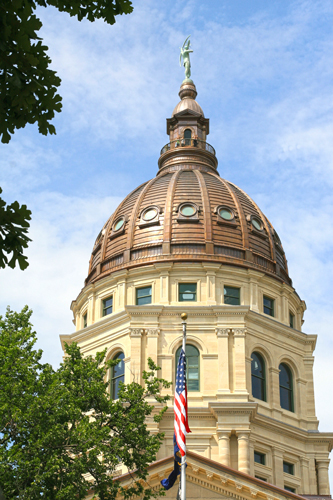
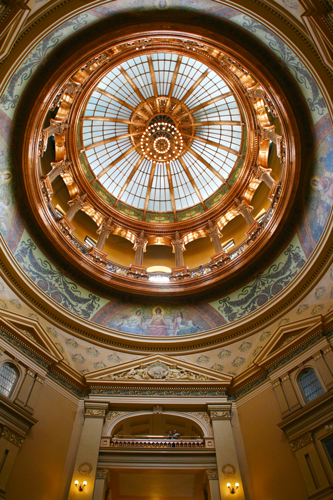
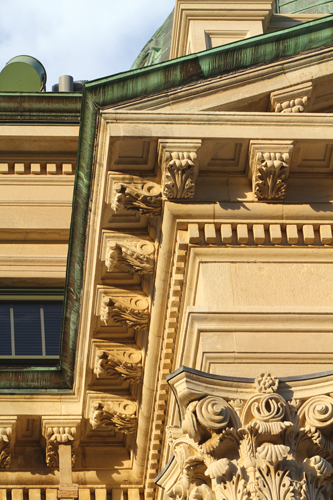
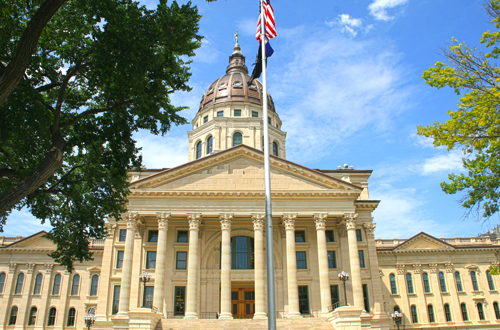 One of the largest state capitols in the nation, this premier historic structure was built to represent all Kansans.
One of the largest state capitols in the nation, this premier historic structure was built to represent all Kansans.
The east wing cornerstone was placed October of 1866. Thirty-seven years later, in 1903, the construction was completed at a cost of $3,200,588.92.
The world class Senate Chamber appears as it did when it was remodeled in 1885. The 40 desks in the Senate Chamber are made from native Kansas wild cherry wood. The blue marble around the base of the Senate Chamber was imported from Belgium. The large center portion is onyx from Mexico. The narrow white strip at the top with the inlaid bronze squares is Italian Carrara marble. The gray marble that covers the archways is hand carved and is from Tennessee. The 28 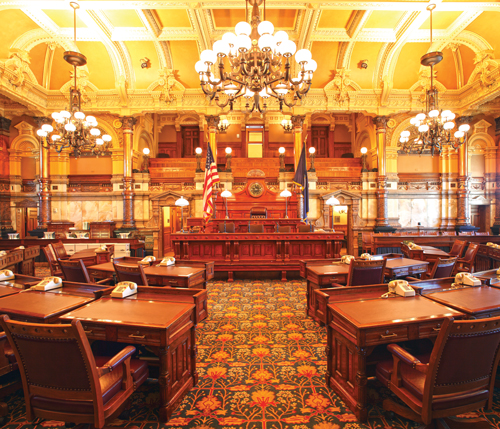 columns in the Senate Chamber are made of copper. They were hand hammered by Italian artisans using a technique known as repousse'. The design is hammered from the backside out into a mold and then the details are finished from the front. The design motif includes roses and morning glories (some of our native wildflowers). The ceiling is European Renaissance design and the round glass windows near the top of the Senate Chamber were imported from France.
columns in the Senate Chamber are made of copper. They were hand hammered by Italian artisans using a technique known as repousse'. The design is hammered from the backside out into a mold and then the details are finished from the front. The design motif includes roses and morning glories (some of our native wildflowers). The ceiling is European Renaissance design and the round glass windows near the top of the Senate Chamber were imported from France.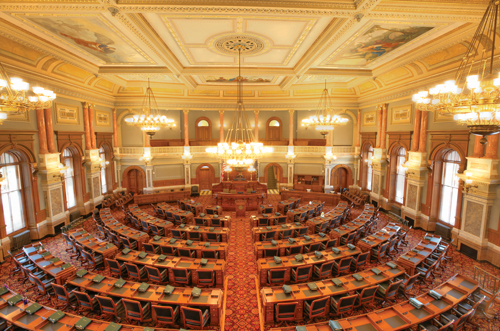
The ceiling in the chambers of the House of Representatives was designed in French-Italian Renaissance style. The murals on the ceiling that had been painted in 1882 were uncovered and restored in 1998. They were painted by E.S. Miragoli and Co. of St. Louis. The wainscoting is rose-gray marble from Tennessee and is trimmed with white Italian marble. Panels of brocelian marble, Belgian black marble, and jasper, a variety of quartz, are the inset panels in the wainscoting on the east and west walls. The names of prominent free state leaders and abolitionist are painted above the windows in the House Chamber. The columns in the House Chamber look like marble but are actually a scagliola -- faux marble technique that mixes paint with plaster to replicate the look of marble. They are then polished with carnuba wax to give it a shiny finish.
The white marble on every floor came from the state of Georgia and the gray marble from tennessee. The second floor rotunda has varieties from Belgium, France, and Italy.
The state legislature approved the dome in 1881 and construction began in 1885. The outer copper dome extends approximately 75 feet above the inner dome. The copper sheeting covering the outer dome turns green when it oxidizes. The inner dome is composed of glass panels. There are 296 steps leading up from the fifth floor to the top of the dome and it's now possible to climb these steps again!
The capitol from ground floor to the top of the dome is 304 feet, a few feet higher than our nation's Capitol in Washington, D.C. In 2002, Richard Bergen's bronze statue of a Kansa warrior was placed on top of the dome. Named Ad Astra, the statue added 22 feet and 2 inches to the height.
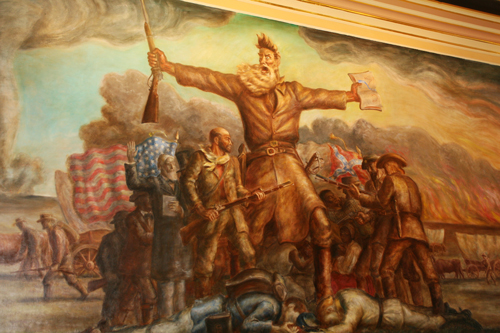 Beautiful statues and famous murals (including ones by John Steuart Curry) and paintings add to the beauty of the interior. Also, the 1923 elevator is one of the few hand-operated passenger elevators still used in the state.
Beautiful statues and famous murals (including ones by John Steuart Curry) and paintings add to the beauty of the interior. Also, the 1923 elevator is one of the few hand-operated passenger elevators still used in the state.
Placed on the National Register of Historic Places in 1971, restoration, preservation work, and new construction began in 2001 and will be completed in 2011.
The Capitol occupies a 20-acre site donated through the efforts of Cyrus K. Holliday, president of the early Topeka Association and one of the founders of the Santa Fe Railroad.
Contact: 785.296.3966
Reservations are recommended.